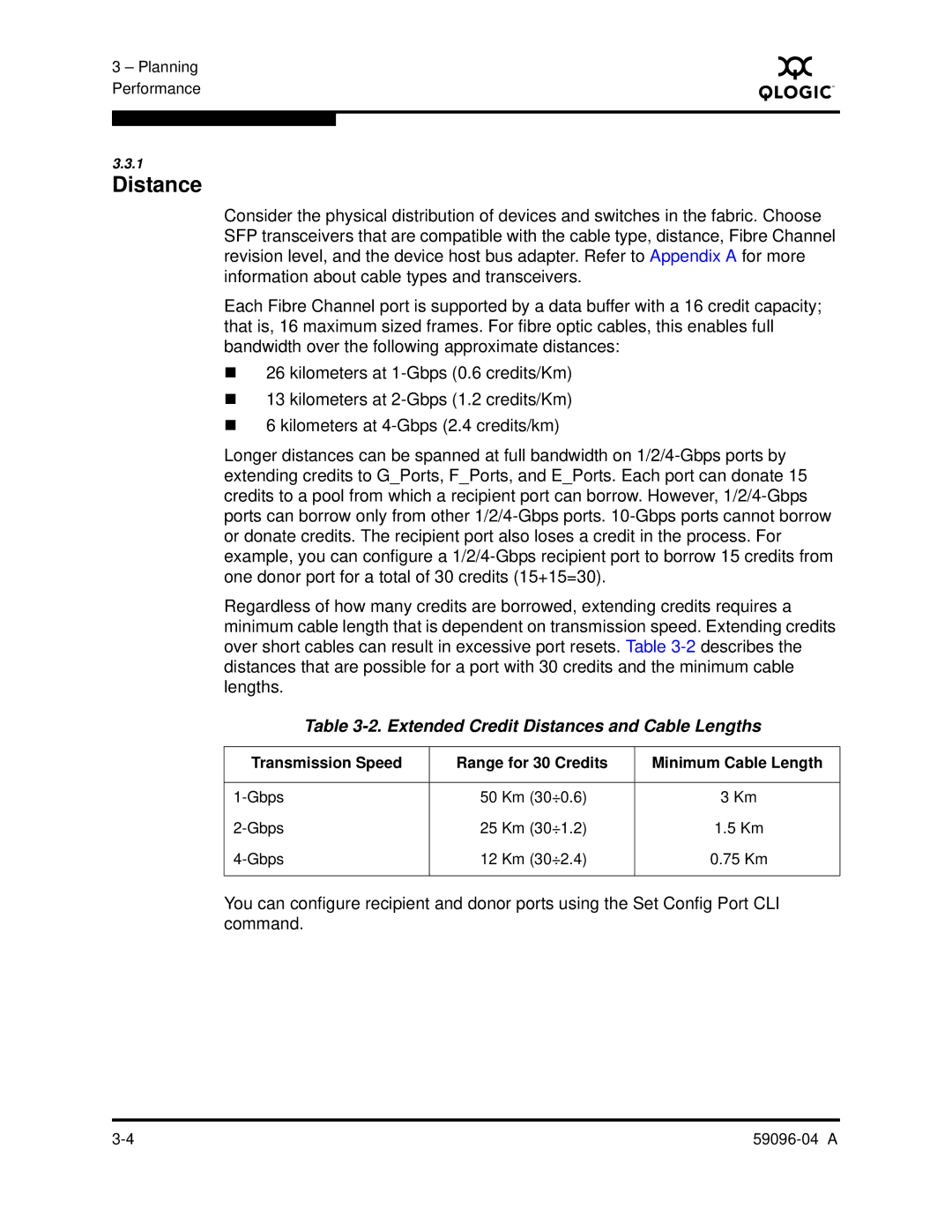
3 – Planning Performance
S
3.3.1
Distance
Consider the physical distribution of devices and switches in the fabric. Choose SFP transceivers that are compatible with the cable type, distance, Fibre Channel revision level, and the device host bus adapter. Refer to Appendix A for more information about cable types and transceivers.
Each Fibre Channel port is supported by a data buffer with a 16 credit capacity; that is, 16 maximum sized frames. For fibre optic cables, this enables full bandwidth over the following approximate distances:
26 kilometers at
13 kilometers at
6 kilometers at
Longer distances can be spanned at full bandwidth on
Regardless of how many credits are borrowed, extending credits requires a minimum cable length that is dependent on transmission speed. Extending credits over short cables can result in excessive port resets. Table
Table 3-2. Extended Credit Distances and Cable Lengths
Transmission Speed | Range for 30 Credits | Minimum Cable Length |
|
|
|
50 Km (30÷0.6) | 3 Km | |
25 Km (30÷1.2) | 1.5 Km | |
12 Km (30÷2.4) | 0.75 Km | |
|
|
|
You can configure recipient and donor ports using the Set Config Port CLI command.
